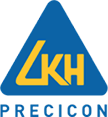Amidst rising labour costs and a scarcity of skilled inspectors, manufacturers are under pressure to automate processes, especially visual inspection tasks. However, artificial intelligence has progressed to a level where it can effectively recognise object features and learn criteria autonomously. To solve these challenges, Omron developed new defect detection AI that reproduces the techniques of skilled inspectors. This AI is now part of the FH Vision System.
Omron’s Robot Vision with FH Series is an innovative technology that manages limited manpower while maintaining high-quality assembly standards.
Identifies good products akin to experienced inspectors
Sensory inspection requires a certain tolerance for variations that don’t pass a certain threshold. Determining what variations are acceptable is a key capability of expert inspectors and poses a challenge for automated inspection systems. The FH Series can determine acceptable variation tolerances.
AI Fine Matching
Omron’s AI Fine Matching tool learns from the image data of non-defective products to quickly acquire the “expertise” that inspectors have developed over many years. This reduces costs and boosts productivity through automation.
AI learns images of good products with variations and generates an AI model. Every time an inspection is carried out, AI reconstructs a model that is presumed to be a good product. AI extracts a difference between the reconstructed good product image and a captured image to identify a defect, reducing overdetection.
It is easy to navigate with only three quick steps on the settings screen guide the user through the process of creating a good product model with the minimum number of images.
Create model
The system suggests images to learn, helping to complete the good product model.
Prepare image
Although standard AI processing requires a huge number of images for learning, the FH Series requires only 100 to 200 images
Check results
If a good product is mistakenly flagged as defective, AI assigns correlation scores to each image to visualise overdetection levels, aiding in identifying images that need further learning to reduce overdetection.
Captures defects with human-like sensitivity
Defect detection tasks that rely on human sensibility are a challenge to automate. Fortunately, powerful new AI technology can match the skills and capabilities of experienced inspectors. Automating human vision-based inspection with the FH Series.
AI Scratch Detect Filter
The new AI-based image filter reproduces the technique that skilled inspectors use to identify a defect on any product background. Scratches and blemishes that were once difficult to capture can now be identified even without the use of samples or adjustment.
The AI Scratch Defect Filter learns using images in which human inspectors notice defects. It successfully extracts abnormalities by judging their features without definition. The learned data facilitates defect detection on processed surfaces and other uneven backgrounds that previously posed an insurmountable challenge.
No special environment is required
With the FH Series, there’s no need for high-end hardware or specialised engineers who can configure the system to suit your needs. Omron’s general-purpose vision system makes it easier than ever to introduce AI into production sites.
Vision controller with AI functionality
Artificial intelligence has traditionally required a high-end environment, but the lightweight creative solution comes in the form of user-friendly processing items that have been integrated into our popular FH Series hardware.
No special hardware for AI required
It used to be difficult to introduce AI technology to many inspection processes because of its hardware requirements. The FH Series does not require special hardware, facilitating the introduction of this technology.
No AI engineer required
To reliably use AI technology in processes, the engineer used to have not only image processing skills but also programming and maintenance skills. With the FH Series, however, you can use AI technology just like operating a standard vision sensor. No dedicated AI engineer is required.
High-resolution cameras
Omron offers a range of cameras that can capture high-resolution images suitable for sensory inspection at high speeds.
MDMC light with flexible lighting patterns
Omron offers a range of cameras that can capture high-resolution images suitable for sensory inspection at high speeds. This light can be adjusted to defects by combining the illumination colours and angles as humans do. Even if new objects or inspection items are added after installation, there is no need to add or change the light—just change the illumination pattern. The illumination patterns can be registered as settings, facilitating duplicating production lines.
Parallel processing for different inspections
Multi-Line Random-Trigger inspects at up to four different timings
A single controller can perform inspections at different points at different timings. Controllers installed for each process can be integrated into one, reducing initial costs and saving space.
A single controller that can control each line saves initial costs and space.
Four cameras can be connected to one controller, enabling simultaneous inspection of dents and scratches from four directions.
Unique identification and quality control
Unique ID associated with inspection image and result
The FH Series can associate a unique ID with the inspection image and result, and then output them to the host device. You can immediately find required inspection images and quickly identify causes of fails.
2D Code II provides powerful code reading
The FH Series incorporates a dedicated algorithm for reliable and fast 2D code reading even under variable ambient brightness or adverse conditions such as after processing or washing.
OCR reliably reads difficult-to-read characters
OCR can reliably read characters printed too close to each other or on curved surfaces. Plus signs can be read too.
Character Inspection reads special fonts
Character Inspection recognises special fonts and non-alphanumeric characters based on pattern search using the dictionary set up by the user.
Interested to find out more about Omron Vision with FH Series? Feel free to contact us!
